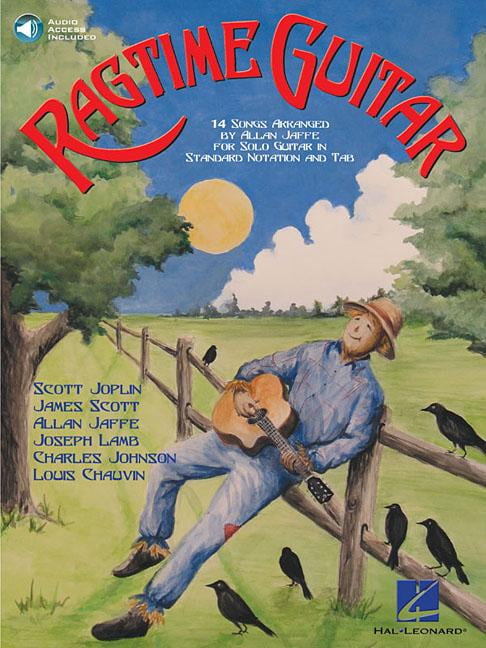


Pop fashion moved on, to take up and dilute other black musical creations but ragtime entered the American folk consciousness, both white and black in the Eastern states, particularly, it became a vital component in the sound of black blues, its lilting dance rhythms permeating, sometimes dominating, the ideas of the musicians of Virginia, the Carolinas, and Georgia. Ragtime was a coming to terms between African cross-rhythms and the formalised syncopation of European art music and thus served equally as a vehicle for Scott Joplin’s doomed ambition to be taken seriously and as a safely exotic craze for whites. The syncopated music that its black originators called ragtime was developed as a piano music in the last decade of the 19th Century, about the same time that the blues were also taking shape as a musical genre. Genres: Blues, Country Blues, Country Blues Guitar, Ragtime Guitar, Blues Guitar, Blues Harmonica, Georgia Blues, Virginia Blues, Carolina Blues, Piedmont Blues,Ībridged from this albums original booklet notes. Willie Walker, vocal / guitar Sam Brooks, vocal on 22/ guitar. George ∼hicken Wilson, guitar / kazoo on 13, 16, 17 Jimmy Skeeter Hinton, harmonica on 14, 15, 16, 17 / bellboard, washboard on 12, 13, 16, 17. Stephen Tarter, vocal / guitar Harry Gay, guitar. William (Bill) Moore, vocal / speech / guitar.
RAGTIME GUITAR PLUS
In the U.S., many notable musicians extended these picking styles and gave the music a country flavor.(1927 1930) Complete Recorded Works plus Blind Blake Unissued Takeīlind Blake, guitar / speech unknown, rattle-bones. Many of the original Scott Joplin rags have been faithfully transcribed, and other ways of playing appeared constantly. Modern players took hold of this early ragtime sound and quickly extended the chords and techniques, exploring new areas. These guys laid the foundations of the style and provided the foundation for later master guitar pickers such as Merle Travis, Doc Watson, Chet Atkins and Tommy Emmanuel. I've presented 8 video lessons demonstrating the techniques of some great guitar players who were experts at playing ragtime style syncopated guitar songs - John Hurt, Pink Anderson, Willie Walker, Blind Boy Fuller and Blind Willie McTell. Blake's work is covered in another of my courses. In many of his songs, Blake doubled up on the alternating thumb beats, making two notes instead of one. He achieved this by taking the thumb control to a new, extraordinary level.

Blind Blake was probably the foremost ragtime blues guitar player between 19. Many guitarists, such as Mississippi John Hurt, used this technique exclusively and recorded some fine work - he is one of the artists we take a look at in this course.The dexterity needed to play this style is far above that required to play monotonic, delta style blues. When this technique was combined with the picking sounds of the fingers, a very complex sound is produced which sounds like two guitars! To accomplish this, it was necessary to strike two or three bass strings with the picking thumb, alternating between the strings, producing a bum-chick sound. Ragtime piano became popular in the early 1900s and some blues guitar players realized that the characteristic bass signature could be played in a simplified way on the guitar. Alternating Bass And Ragtime Blues Guitar


 0 kommentar(er)
0 kommentar(er)
